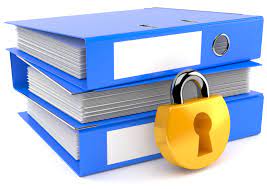The Importance of Document Archiving in the Digital Age
In today’s fast-paced digital world, the need for effective document archiving has never been more critical. Document archiving involves storing and preserving important records, documents, and information in a systematic and secure manner to ensure their long-term accessibility and usability.
One of the key benefits of document archiving is the preservation of valuable information for future reference. By archiving documents, organizations can safeguard critical data from loss, damage, or unauthorized access. This is particularly crucial for businesses that need to comply with regulatory requirements or legal obligations regarding data retention.
Document archiving also promotes efficient information management within an organization. By organizing and categorizing documents systematically, employees can easily retrieve and share information when needed. This enhances productivity, reduces duplication of efforts, and streamlines workflow processes.
Moreover, document archiving plays a vital role in disaster recovery planning. By maintaining backup copies of essential documents in secure off-site locations or cloud storage systems, organizations can mitigate the risks associated with data loss due to natural disasters, cyber-attacks, or hardware failures.
With the increasing volume of digital data being generated daily, effective document archiving solutions are essential to manage this influx of information efficiently. Advanced technologies such as electronic document management systems (EDMS) offer automated tools for scanning, indexing, and retrieving documents digitally.
In conclusion, document archiving is a fundamental practice that ensures the preservation, accessibility, and security of valuable information in today’s digital age. By implementing robust archiving strategies and leveraging technology solutions, organizations can enhance their operational efficiency, compliance readiness, and overall data governance practices.
Six Essential Tips for Efficient Document Archiving: Organization, Naming, and Secure Storage Strategies
- 1. Organize documents into categories or folders for easy retrieval.
- 2. Use descriptive file names to quickly identify the contents of each document.
- 3. Regularly purge and archive outdated or irrelevant documents to free up space.
- 4. Implement a consistent naming convention to ensure uniformity across all documents.
- 5. Consider using cloud storage for secure and accessible archiving from anywhere.
- 6. Backup important documents regularly to prevent data loss in case of emergencies.
1. Organize documents into categories or folders for easy retrieval.
To optimize document archiving efficiency, it is crucial to organize documents into categories or folders for easy retrieval. By structuring information in a logical and systematic manner, users can quickly locate specific documents without wasting time searching through cluttered files. Categorizing documents based on relevant criteria or topics not only enhances accessibility but also promotes better organization and workflow management within an archive system. This simple yet effective tip can significantly streamline document retrieval processes and improve overall productivity in handling archived materials.
2. Use descriptive file names to quickly identify the contents of each document.
When it comes to document archiving, using descriptive file names is a crucial tip that can significantly improve efficiency and organization. By assigning clear and informative names to your files, you can quickly identify the contents of each document without having to open it. This simple practice not only saves time but also helps streamline the retrieval process, making it easier to locate specific information when needed. Additionally, descriptive file names enhance collaboration within teams by providing context and clarity, ultimately contributing to a more organized and productive work environment.
3. Regularly purge and archive outdated or irrelevant documents to free up space.
Regularly purging and archiving outdated or irrelevant documents is a crucial step in efficient document management. By removing unnecessary files from active storage and transferring them to an archive, organizations can free up valuable space, improve searchability, and streamline access to current and relevant information. This practice not only enhances data organization but also helps maintain data integrity, security, and compliance with retention policies. Keeping a clean and updated document repository ensures that users can easily locate essential documents while optimizing storage resources for more critical data.
4. Implement a consistent naming convention to ensure uniformity across all documents.
To improve document archiving practices, it is crucial to implement a consistent naming convention for all files. By establishing a standardized naming structure, organizations can ensure uniformity and clarity across their document repositories. Consistent file names make it easier to search, retrieve, and organize information efficiently, reducing the risk of confusion or duplication. This simple yet effective tip helps streamline document management processes and enhances overall accessibility and usability of archived documents.
5. Consider using cloud storage for secure and accessible archiving from anywhere.
When it comes to document archiving, a valuable tip to consider is utilizing cloud storage for secure and accessible archiving from anywhere. Cloud storage offers the convenience of storing documents remotely on servers maintained by third-party providers, ensuring data security and accessibility from any location with an internet connection. By leveraging cloud storage solutions, organizations can enhance their document archiving practices by safeguarding critical information, enabling seamless collaboration among team members, and facilitating easy retrieval of documents whenever needed.
6. Backup important documents regularly to prevent data loss in case of emergencies.
Backing up important documents regularly is a crucial aspect of effective document archiving. By creating duplicate copies of essential files and storing them in secure locations, individuals and organizations can safeguard their valuable information against potential data loss during emergencies such as natural disasters, cyber-attacks, or hardware failures. Regular backups ensure that even if the original documents are compromised or inaccessible, there is always a reliable copy available for recovery purposes. This proactive approach to data protection helps mitigate risks and ensures continuity in critical business operations.

